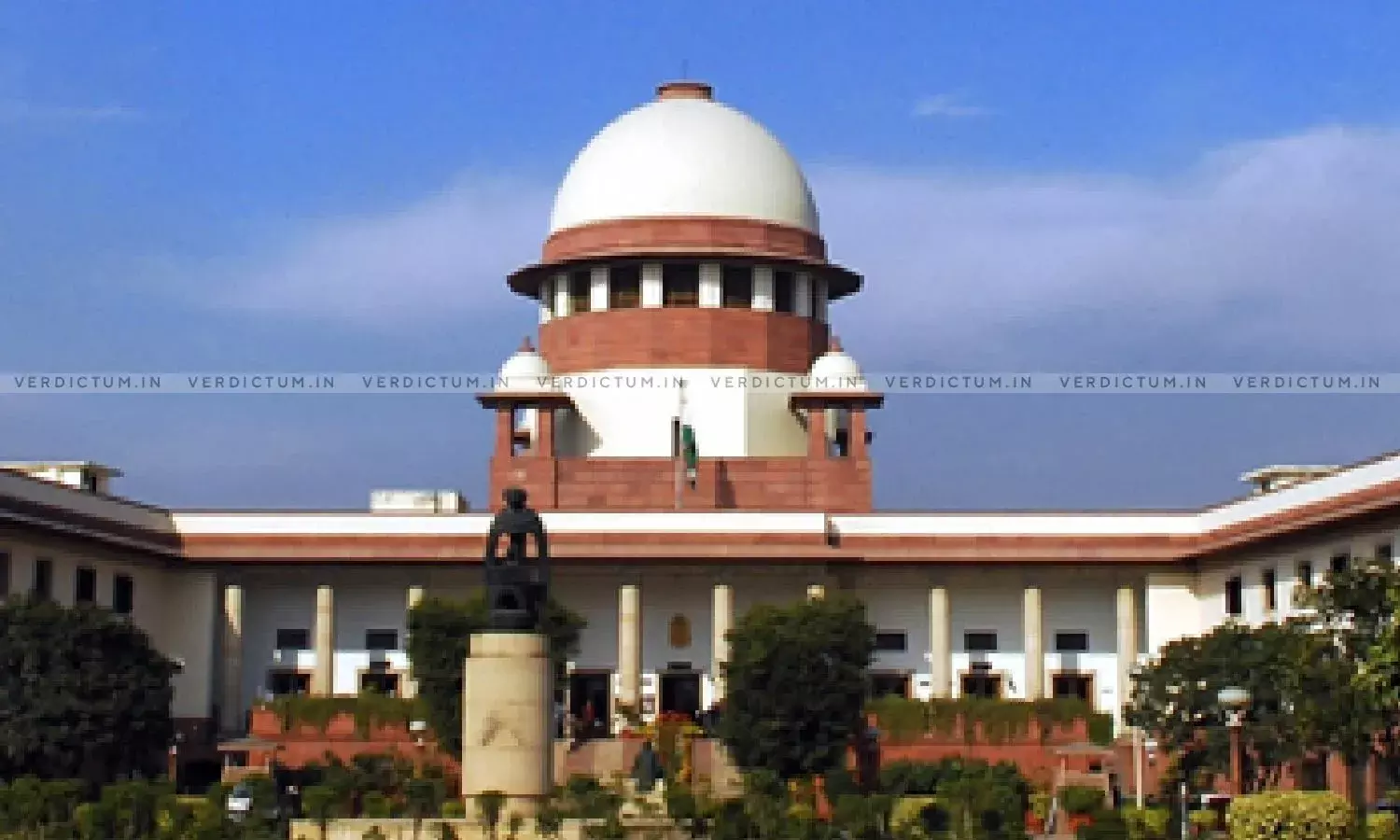Dying Declaration Alone Is Insufficient For Conviction, Needs Corroborative Evidence: SC While Setting Aside Death Sentence In Murder Case

The Supreme Court has set aside the conviction and death sentence of a man holding that dying declaration alone cannot be the basis of a conviction where suspicion was raised on its correctness. The alleged convict was initially sentenced to death under Section 302 IPC, life imprisonment under Section 436 IPC, and life imprisonment under Section 326-A IPC.
A three-judge Bench of Justice B.R. Gavai, Justice J.B. Pardiwala, and Justice Prashant Kumar Mishra observed that “It is unsafe to record the conviction on the basis of a dying declaration alone in the cases where suspicion, like the case on hand is raised, as regards the correctness of the dying declaration. In such cases, the Court may have to look for some corroborative evidence by treating the dying declaration only as a piece of evidence.”
The appellant-convict was appealing through special leave against a judgment by the Allahabad High Court. The High Court had affirmed the conviction and death sentence passed by the Additional Sessions Judge. The prosecution claimed personal animosity as the motive due to opposition to the convict's second marriage. The trial court found the appellant guilty, and the High Court upheld the decision.
Senior Advocate Gopal Sankaranarayanan appeared for the Appellant and Advocate Ardhendumauli Kumar Prashad (AAG) appeared for the Respondents.
The appellant's counsel contended that the prosecution failed to establish guilt beyond reasonable doubt, emphasizing reliance on circumstantial evidence lacking incriminating weight. They questioned the credibility of the dying declarations due to conflicts with eyewitnesses' testimonies and highlighted irregularities in their recording. The appellant's counsel raised concerns about the victims' condition during declaration and requested acquittal. Conversely, the state opposed these claims, asserting that the lower courts correctly found the appellant guilty.
The Court noted that the case revolved around the admissibility and reliability of dying declarations as evidence in a criminal trial. After reviewing the materials on record, the primary question before the Court was whether the prosecution had successfully proven its case beyond a reasonable doubt against the appellant-convict.
The Court noted that the appellant-convict had a strained relationship with the deceased persons and was accused of setting a room on fire resulting in their deaths. There were two dying declarations made by the deceased persons, but the oral evidence of eyewitnesses (PW-2 and PW-4) seemed contradictory to the dying declarations.
The Court found discrepancies in the dying declarations and the oral evidence. The oral evidence claimed the presence of eyewitnesses at the scene during the fire, whereas the dying declarations stated that a neighbor had rescued the victims. Additionally, inconsistencies in the details of the incident and the fact that the inflammable substance might not have been directly poured on the victims cast doubt on the prosecution's case, the Court noted.
The Court delved into the principles governing dying declarations, emphasizing that they are admissible due to the solemnity of a person's imminent death and their presumed honesty in that state. However, the Court highlighted that caution must be exercised since dying declarations lack the cross-examination process and can be influenced by various factors.
Furthermore, the Court analyzed the circumstances of the incident, the statements made in the dying declarations, and the oral evidence. Ultimately, the Court concluded that neither the dying declarations nor the oral evidence were entirely reliable or consistent. As a result, the Court stressed that mere suspicion or strong accusations in a dying declaration are not sufficient for conviction.
“The conduct of the accused may be unnatural because he was residing in the very same house, however, the conduct which may be a relevant fact under Section 8 of the Indian Evidence Act, 1872 (for short, ‘the Act 1872’), by itself may not be sufficient to hold a person guilty of the offence of murder.”
The Court highlighted the distinction between suspicion and proof beyond reasonable doubt, emphasizing that while suspicion cannot replace proof, the court's duty is to ensure clear, cogent, and unimpeachable evidence before pronouncing guilt.
“Since time immemorial, despite a general consensus of presuming that the dying declaration is true, they have not been stricto-sensu accepted, rather the general course of action has been that judge decides whether the essentials of a dying declaration are met and if it can be admissible, once done, it is upon the duty of the court to see the extent to which the dying declaration is entitled to credit.”
The Supreme Court further laid down certain factors that can be considered to determine weight of the dying declaration but not its admissibility.
The Court ruled that the prosecution had not proven its case beyond a reasonable doubt based on the available evidence, and thus, the appellant-convict could not be convicted solely based on the unreliable dying declarations and contradictory oral evidence.
The Court allowed the appeals and acquitted the appellant-convict of all the charges leveled against him.
Cause Title: Irfan v. The State of Uttar Pradesh
Click here to read/download Judgment


